Jiwei Wei
Pushing the Limits of Safety: A Technical Report on the ATLAS Challenge 2025
Jun 14, 2025Abstract:Multimodal Large Language Models (MLLMs) have enabled transformative advancements across diverse applications but remain susceptible to safety threats, especially jailbreak attacks that induce harmful outputs. To systematically evaluate and improve their safety, we organized the Adversarial Testing & Large-model Alignment Safety Grand Challenge (ATLAS) 2025}. This technical report presents findings from the competition, which involved 86 teams testing MLLM vulnerabilities via adversarial image-text attacks in two phases: white-box and black-box evaluations. The competition results highlight ongoing challenges in securing MLLMs and provide valuable guidance for developing stronger defense mechanisms. The challenge establishes new benchmarks for MLLM safety evaluation and lays groundwork for advancing safer multimodal AI systems. The code and data for this challenge are openly available at https://github.com/NY1024/ATLAS_Challenge_2025.
Beyond Whole Dialogue Modeling: Contextual Disentanglement for Conversational Recommendation
Apr 24, 2025Abstract:Conversational recommender systems aim to provide personalized recommendations by analyzing and utilizing contextual information related to dialogue. However, existing methods typically model the dialogue context as a whole, neglecting the inherent complexity and entanglement within the dialogue. Specifically, a dialogue comprises both focus information and background information, which mutually influence each other. Current methods tend to model these two types of information mixedly, leading to misinterpretation of users' actual needs, thereby lowering the accuracy of recommendations. To address this issue, this paper proposes a novel model to introduce contextual disentanglement for improving conversational recommender systems, named DisenCRS. The proposed model DisenCRS employs a dual disentanglement framework, including self-supervised contrastive disentanglement and counterfactual inference disentanglement, to effectively distinguish focus information and background information from the dialogue context under unsupervised conditions. Moreover, we design an adaptive prompt learning module to automatically select the most suitable prompt based on the specific dialogue context, fully leveraging the power of large language models. Experimental results on two widely used public datasets demonstrate that DisenCRS significantly outperforms existing conversational recommendation models, achieving superior performance on both item recommendation and response generation tasks.
Multi-Type Context-Aware Conversational Recommender Systems via Mixture-of-Experts
Apr 18, 2025Abstract:Conversational recommender systems enable natural language conversations and thus lead to a more engaging and effective recommendation scenario. As the conversations for recommender systems usually contain limited contextual information, many existing conversational recommender systems incorporate external sources to enrich the contextual information. However, how to combine different types of contextual information is still a challenge. In this paper, we propose a multi-type context-aware conversational recommender system, called MCCRS, effectively fusing multi-type contextual information via mixture-of-experts to improve conversational recommender systems. MCCRS incorporates both structured information and unstructured information, including the structured knowledge graph, unstructured conversation history, and unstructured item reviews. It consists of several experts, with each expert specialized in a particular domain (i.e., one specific contextual information). Multiple experts are then coordinated by a ChairBot to generate the final results. Our proposed MCCRS model takes advantage of different contextual information and the specialization of different experts followed by a ChairBot breaks the model bottleneck on a single contextual information. Experimental results demonstrate that our proposed MCCRS method achieves significantly higher performance compared to existing baselines.
Syzygy of Thoughts: Improving LLM CoT with the Minimal Free Resolution
Apr 16, 2025
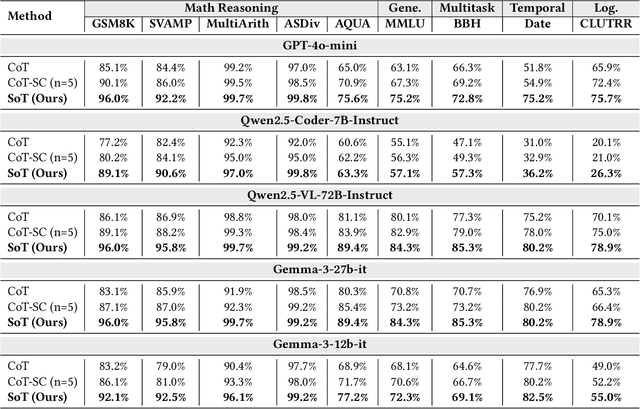
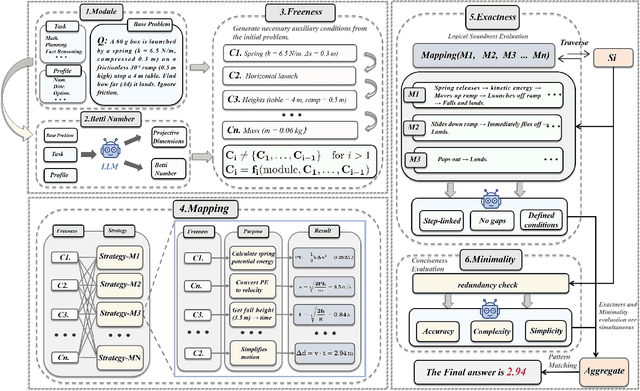

Abstract:Chain-of-Thought (CoT) prompting enhances the reasoning of large language models (LLMs) by decomposing problems into sequential steps, mimicking human logic and reducing errors. However, complex tasks with vast solution spaces and vague constraints often exceed the capacity of a single reasoning chain. Inspired by Minimal Free Resolution (MFR) in commutative algebra and algebraic geometry, we propose Syzygy of Thoughts (SoT)-a novel framework that extends CoT by introducing auxiliary, interrelated reasoning paths. SoT captures deeper logical dependencies, enabling more robust and structured problem-solving. MFR decomposes a module into a sequence of free modules with minimal rank, providing a structured analytical approach to complex systems. This method introduces the concepts of "Module", "Betti numbers","Freeness", "Mapping", "Exactness" and "Minimality", enabling the systematic decomposition of the original complex problem into logically complete minimal subproblems while preserving key problem features and reducing reasoning length. We tested SoT across diverse datasets (e.g., GSM8K, MATH) and models (e.g., GPT-4o-mini, Qwen2.5), achieving inference accuracy that matches or surpasses mainstream CoTs standards. Additionally, by aligning the sampling process with algebraic constraints, our approach enhances the scalability of inference time in LLMs, ensuring both transparent reasoning and high performance. Our code will be publicly available at https://github.com/dlMARiA/Syzygy-of-thoughts.
LoLDU: Low-Rank Adaptation via Lower-Diag-Upper Decomposition for Parameter-Efficient Fine-Tuning
Oct 17, 2024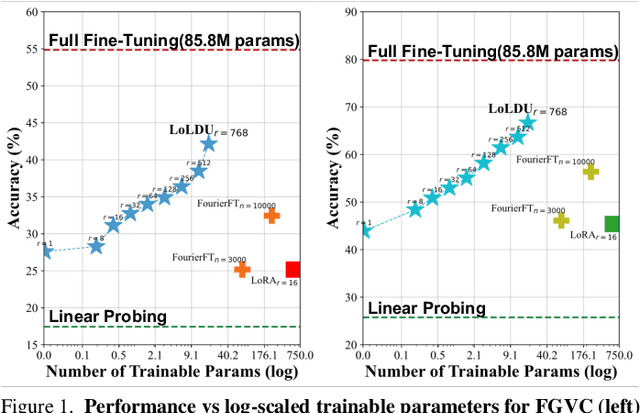
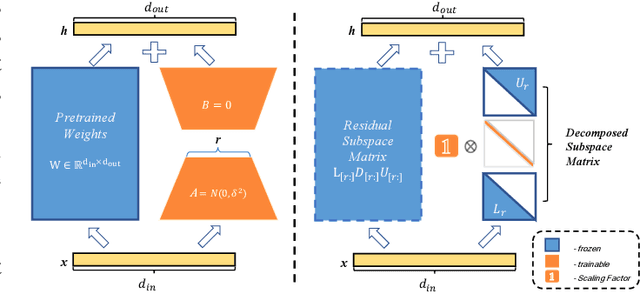

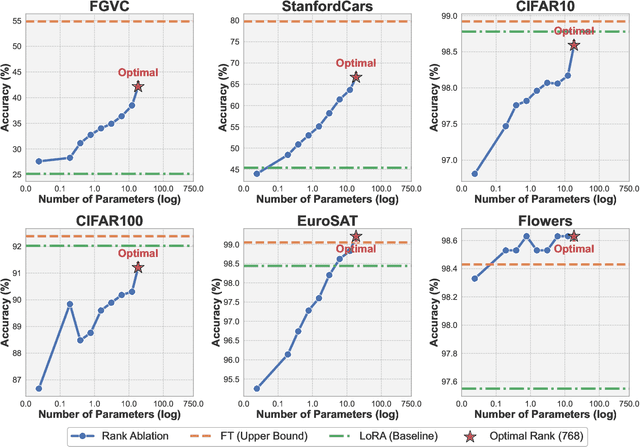
Abstract:The rapid growth of model scale has necessitated substantial computational resources for fine-tuning. Existing approach such as Low-Rank Adaptation (LoRA) has sought to address the problem of handling the large updated parameters in full fine-tuning. However, LoRA utilize random initialization and optimization of low-rank matrices to approximate updated weights, which can result in suboptimal convergence and an accuracy gap compared to full fine-tuning. To address these issues, we propose LoLDU, a Parameter-Efficient Fine-Tuning (PEFT) approach that significantly reduces trainable parameters by 2600 times compared to regular PEFT methods while maintaining comparable performance. LoLDU leverages Lower-Diag-Upper Decomposition (LDU) to initialize low-rank matrices for faster convergence and orthogonality. We focus on optimizing the diagonal matrix for scaling transformations. To the best of our knowledge, LoLDU has the fewest parameters among all PEFT approaches. We conducted extensive experiments across 4 instruction-following datasets, 6 natural language understanding (NLU) datasets, 8 image classification datasets, and image generation datasets with multiple model types (LLaMA2, RoBERTa, ViT, and Stable Diffusion), providing a comprehensive and detailed analysis. Our open-source code can be accessed at \href{https://github.com/SKDDJ/LoLDU}{https://github.com/SKDDJ/LoLDU}.
SVFit: Parameter-Efficient Fine-Tuning of Large Pre-Trained Models Using Singular Values
Sep 09, 2024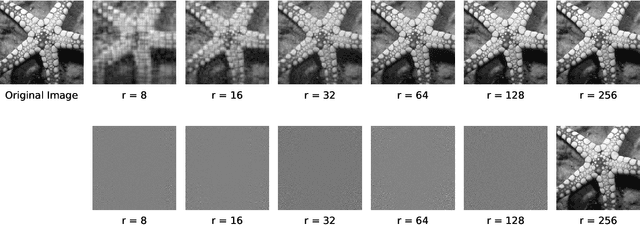

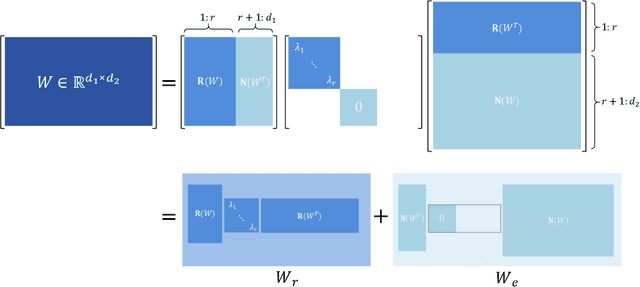

Abstract:Large pre-trained models (LPMs) have demonstrated exceptional performance in diverse natural language processing and computer vision tasks. However, fully fine-tuning these models poses substantial memory challenges, particularly in resource-constrained environments. Parameter-efficient fine-tuning (PEFT) methods, such as LoRA, mitigate this issue by adjusting only a small subset of parameters. Nevertheless, these methods typically employ random initialization for low-rank matrices, which can lead to inefficiencies in gradient descent and diminished generalizability due to suboptimal starting points. To address these limitations, we propose SVFit, a novel PEFT approach that leverages singular value decomposition (SVD) to initialize low-rank matrices using critical singular values as trainable parameters. Specifically, SVFit performs SVD on the pre-trained weight matrix to obtain the best rank-r approximation matrix, emphasizing the most critical singular values that capture over 99% of the matrix's information. These top-r singular values are then used as trainable parameters to scale the fundamental subspaces of the matrix, facilitating rapid domain adaptation. Extensive experiments across various pre-trained models in natural language understanding, text-to-image generation, and image classification tasks reveal that SVFit outperforms LoRA while requiring 16 times fewer trainable parameters.
DiffLoRA: Generating Personalized Low-Rank Adaptation Weights with Diffusion
Aug 13, 2024

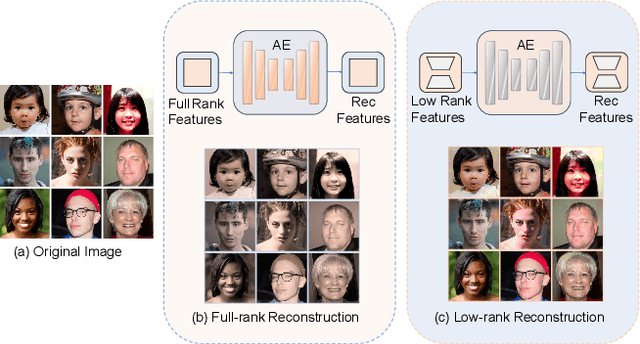
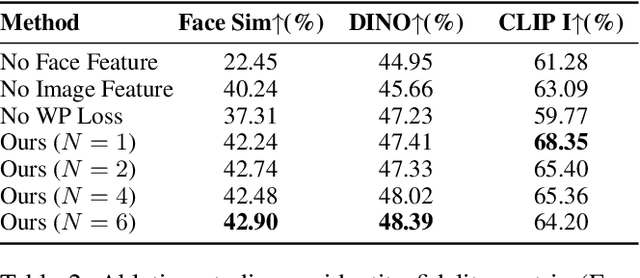
Abstract:Personalized text-to-image generation has gained significant attention for its capability to generate high-fidelity portraits of specific identities conditioned on user-defined prompts. Existing methods typically involve test-time fine-tuning or instead incorporating an additional pre-trained branch. However, these approaches struggle to simultaneously address the demands of efficiency, identity fidelity, and preserving the model's original generative capabilities. In this paper, we propose DiffLoRA, a novel approach that leverages diffusion models as a hypernetwork to predict personalized low-rank adaptation (LoRA) weights based on the reference images. By integrating these LoRA weights into the text-to-image model, DiffLoRA achieves personalization during inference without further training. Additionally, we propose an identity-oriented LoRA weight construction pipeline to facilitate the training of DiffLoRA. By utilizing the dataset produced by this pipeline, our DiffLoRA consistently generates high-performance and accurate LoRA weights. Extensive evaluations demonstrate the effectiveness of our method, achieving both time efficiency and maintaining identity fidelity throughout the personalization process.
Instance-Variant Loss with Gaussian RBF Kernel for 3D Cross-modal Retriveal
May 07, 2023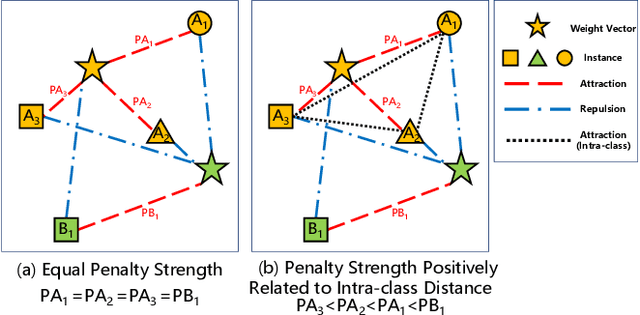

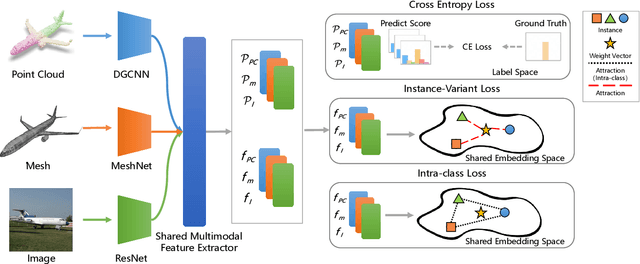

Abstract:3D cross-modal retrieval is gaining attention in the multimedia community. Central to this topic is learning a joint embedding space to represent data from different modalities, such as images, 3D point clouds, and polygon meshes, to extract modality-invariant and discriminative features. Hence, the performance of cross-modal retrieval methods heavily depends on the representational capacity of this embedding space. Existing methods treat all instances equally, applying the same penalty strength to instances with varying degrees of difficulty, ignoring the differences between instances. This can result in ambiguous convergence or local optima, severely compromising the separability of the feature space. To address this limitation, we propose an Instance-Variant loss to assign different penalty strengths to different instances, improving the space separability. Specifically, we assign different penalty weights to instances positively related to their intra-class distance. Simultaneously, we reduce the cross-modal discrepancy between features by learning a shared weight vector for the same class data from different modalities. By leveraging the Gaussian RBF kernel to evaluate sample similarity, we further propose an Intra-Class loss function that minimizes the intra-class distance among same-class instances. Extensive experiments on three 3D cross-modal datasets show that our proposed method surpasses recent state-of-the-art approaches.
Learning Semantic-Aware Knowledge Guidance for Low-Light Image Enhancement
Apr 14, 2023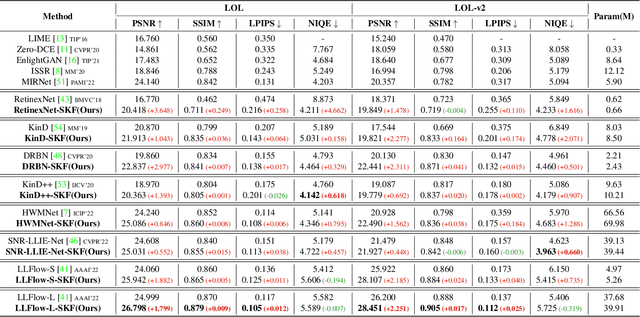
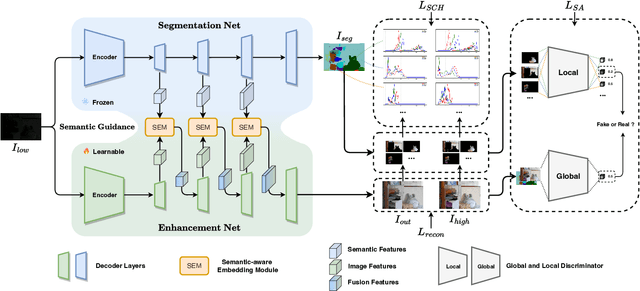
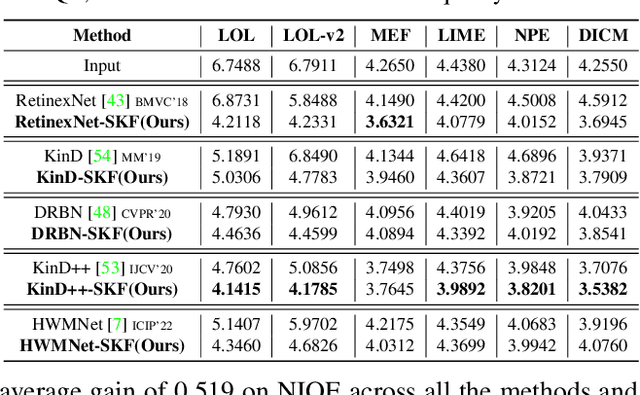
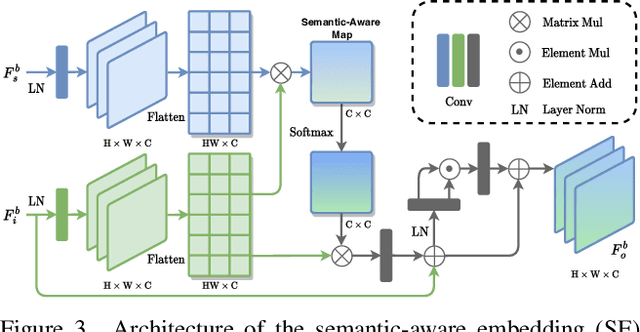
Abstract:Low-light image enhancement (LLIE) investigates how to improve illumination and produce normal-light images. The majority of existing methods improve low-light images via a global and uniform manner, without taking into account the semantic information of different regions. Without semantic priors, a network may easily deviate from a region's original color. To address this issue, we propose a novel semantic-aware knowledge-guided framework (SKF) that can assist a low-light enhancement model in learning rich and diverse priors encapsulated in a semantic segmentation model. We concentrate on incorporating semantic knowledge from three key aspects: a semantic-aware embedding module that wisely integrates semantic priors in feature representation space, a semantic-guided color histogram loss that preserves color consistency of various instances, and a semantic-guided adversarial loss that produces more natural textures by semantic priors. Our SKF is appealing in acting as a general framework in LLIE task. Extensive experiments show that models equipped with the SKF significantly outperform the baselines on multiple datasets and our SKF generalizes to different models and scenes well. The code is available at Semantic-Aware-Low-Light-Image-Enhancement.
Semantic Enhanced Knowledge Graph for Large-Scale Zero-Shot Learning
Dec 26, 2022Abstract:Zero-Shot Learning has been a highlighted research topic in both vision and language areas. Recently, most existing methods adopt structured knowledge information to model explicit correlations among categories and use deep graph convolutional network to propagate information between different categories. However, it is difficult to add new categories to existing structured knowledge graph, and deep graph convolutional network suffers from over-smoothing problem. In this paper, we provide a new semantic enhanced knowledge graph that contains both expert knowledge and categories semantic correlation. Our semantic enhanced knowledge graph can further enhance the correlations among categories and make it easy to absorb new categories. To propagate information on the knowledge graph, we propose a novel Residual Graph Convolutional Network (ResGCN), which can effectively alleviate the problem of over-smoothing. Experiments conducted on the widely used large-scale ImageNet-21K dataset and AWA2 dataset show the effectiveness of our method, and establish a new state-of-the-art on zero-shot learning. Moreover, our results on the large-scale ImageNet-21K with various feature extraction networks show that our method has better generalization and robustness.
 Add to Chrome
Add to Chrome Add to Firefox
Add to Firefox Add to Edge
Add to Edge